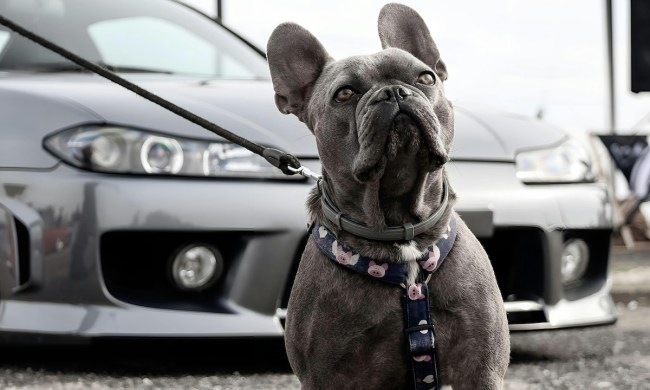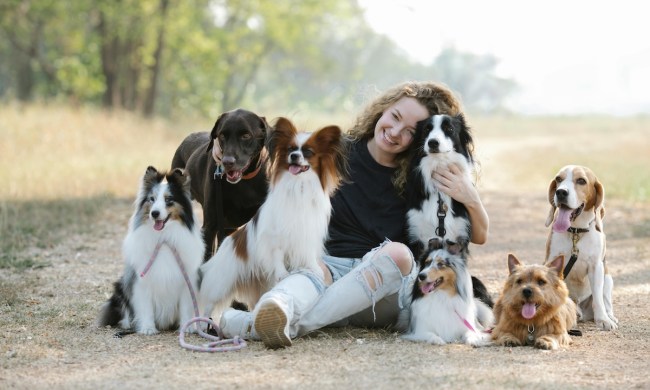If you live an active lifestyle, a high-energy breed like a Siberian husky is a great fit. But if you prefer spending your free time at home, then your lifestyle is probably much better suited to low-maintenance dog breeds. However, you should keep in mind that even the laziest dogs still need daily walks to remain healthy. With that being said, some breeds are perfectly content to laze about while you binge-watch your favorite shows. We’ve compiled a list of laid-back breeds to help you find the perfect pooch to meet your low-energy needs.
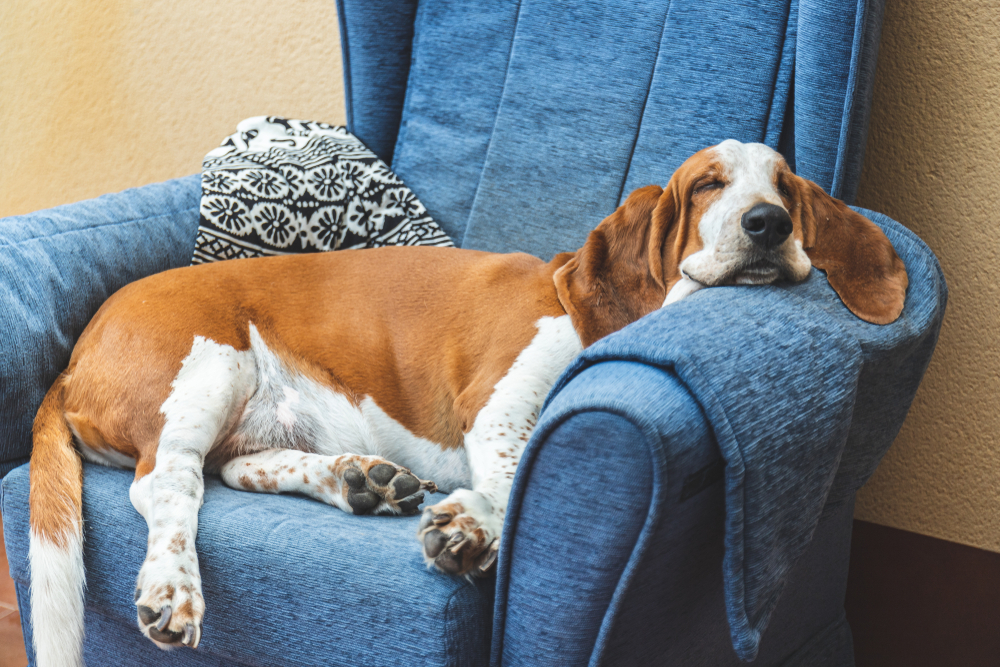
Basset hound
With their droopy faces and large eyes, bassets often have a sad appearance. Fortunately, that couldn’t be farther from the truth. Bassets are a gentle, personable breed, and they get along well with kids of all ages, other dogs, and even cats. Bassets stand up to 15 inches high, weigh an average of 40–65 pounds, and their life expectancy is around 12–13 years.
They don’t require much work when it comes to grooming, an important perk if you want to avoid spending a ton of time and money at the groomer. While they’re notoriously lazy, bassets are still bloodhounds, and they can be incredibly stubborn if they’ve caught the scent of something they’re determined to chase. Due partly to their build and stubby legs, bassets need daily walks to prevent weight gain, but they’re happiest when they can relax at home.
Boston terrier
Curious, clever, and well mannered, the Boston terrier has been nicknamed “The American Gentleman” for good reason. At 15–17 inches tall and 12–25 pounds, they’re small enough for the most compact apartments, and their calm nature makes them the perfect companion for any couch potato.
Boston terriers are fantastic with children, good with other dogs, and require minimal grooming. Boston terriers live around 11–13 years, and they may suffer from breathing problems due to their snub noses. If you’re looking for a breed that will keep you in stitches, these natural entertainers are a fantastic option.
Cavalier King Charles Spaniel
Measuring 12–13 inches in height and coming in around 13–18 pounds, the Cavalier King Charles Spaniel is small without being overly tiny. They have an average life expectancy of 12–15 years. Cavaliers are known for their gentle, intelligent natures, and they’re one of the most versatile breeds available. They’re as at home romping in the grass as they are cuddled in your lap.
While their long, silky coat looks like it might need a lot of upkeep, regular brushing is enough to keep your pooch tangle-free. You’ll need to keep an eye on their ears, though. The long hair covering their ears can tangle and trap debris like twigs, which can cause problems if left unchecked. If you have children or other pets, a Cavalier will fit in perfectly with the rest of the family, thanks to their sweet dispositions.
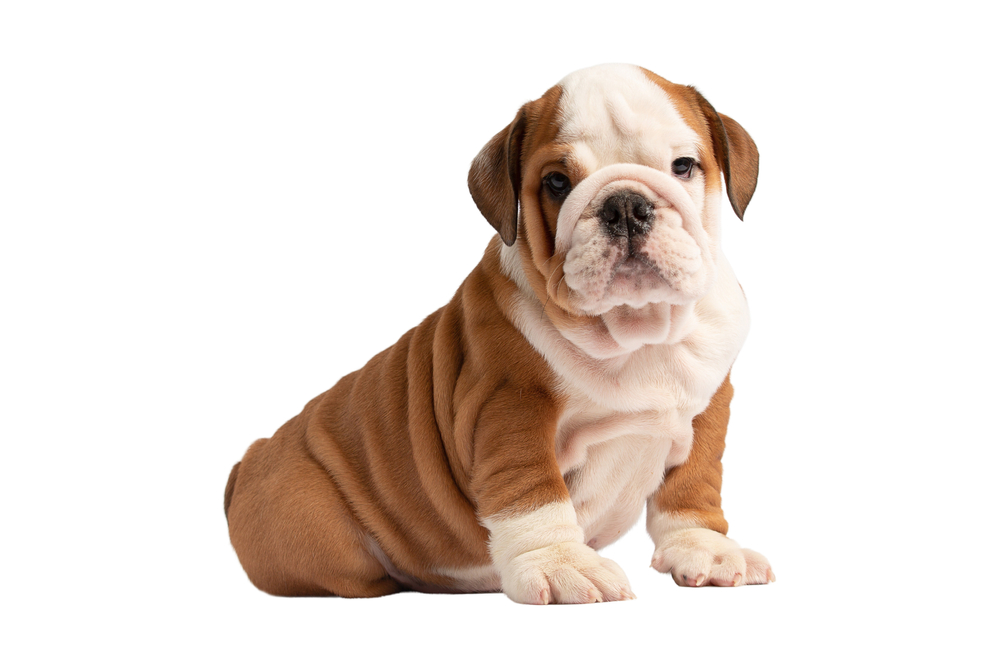
English bulldog
More commonly known as bulldogs, this fierce-looking breed is renowned for its calm demeanor. They aren’t especially tall, only 14–15 inches, but they are hefty. Females weigh an average of 40 pounds, while males are a bit heavier, generally around 50 pounds.
Bulldogs have an average life expectancy of eight to 10 years, the shortest on our list. As with the Boston terrier, their adorably flat faces can make them prone to breathing problems. They need moderate exercise, and they’re effortless to groom. They’re good with children and other pets, but they’re happiest when they can curl up on your lap.
Italian greyhound
While Italian greyhounds aren’t quite as low energy as the other pooches on our list, they’re so petite (only 7–14 pounds) that ensuring they get adequate exercise is doable even if you live in a small apartment. Italian greyhounds are around 13–15 inches tall, and they have a life expectancy of 14–15 years.
They’re gentle, sensitive dogs, so they’re not the best fit if you have small children, who may not understand why the family pup doesn’t want to play with them. That being said, they’re good with other dogs. They usually get along well with cats, too, but because they’re sight hounds, they may chase your cat around the house. Typically, Italian greyhounds prefer to nestle in your lap, and you’ll need to ensure they stay toasty warm during the winter.
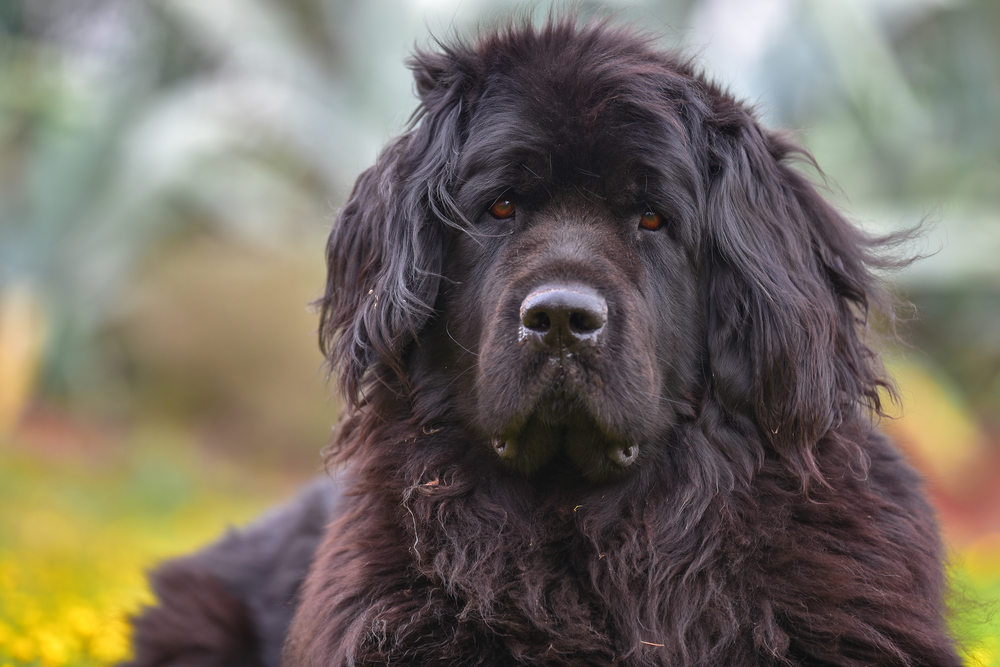
Newfoundland
Admittedly not the most apartment-friendly dog, the Newfoundland is still a dream come true for lazy owners. Newfies need to be encouraged to exercise, as they’re perfectly content to sleep beside your feet — or on your lap. These gentle giants are 26–28 inches tall, and their weight varies widely. Females weigh an average of 100–120 pounds, while males are much heavier, weighing anywhere from 130 to 150 pounds. Their life expectancy is nine to 10 years.
Newfies are known as a “nanny breed” despite their massive size, thanks to their sweet, patient natures. You’ll need to brush their thick, heavy coats once a week to prevent them from becoming matted, and they shed twice a year, making them the most high-maintenance dog on our list in terms of grooming.
Spending hours in the dog park isn’t everyone’s idea of a good time. If you take a more laid-back approach to life, you’ll want a furry companion who’ll be happy to spend time with you at home. With options ranging from small to gigantic, you’re sure to find the perfect pooch for your lifestyle on our list. Some breeds may even surprise you.

